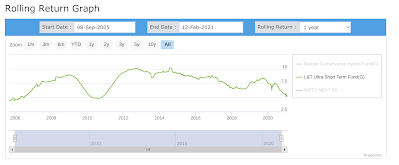I started goal-based investing only last year. A full 15 years after I started working full-time. This is a late start for sure, but better late than never.
I jotted down a total of 19 financial goals and made a plan for how much I’ll invest towards each goal. I was feeling proud about this for a while, but soon realised that this plan resulted in a bad liquidity crunch for me. I pretty much invested everything I was earning and I didn’t have much money left for even semi-essential day-to-day expenses. I tweaked the plan to improve the cash flow, but I was still falling short. Then I realised that big ticket short-term expenses were the biggest shock to the system, and I started saving for some of these expenses.
While I saved for some expenses, others were simply forgotten. I was saving for my 2 children’s school fees, but I had failed to save for the medical expenses for the birth of my 3rd child. Nor was I saving for the school admission fee for my 3rd child. My calculations show that I need to step up my savings significantly to meet these school expenses. I realised that the plans that I was so proud of were severely incomplete.
Saving for children’s school expenses significantly increased the amount of money I had to keep aside every month, but I was still able to remain afloat. Today I was thinking about our old car and it dawned on me that we’ll need to replace this car in a few years. I need to start yet another monthly saving to fund the car purchase when the time comes! 😟
Thinking more, I realised that I should be saving for everything all the time! When should I start saving for a new car? As soon as I have paid off the current car loan. When should I start saving for my child’s 2022-23 school fees? As soon as I have paid the 2021-22 school fees. Sort of like having to pay half a dozen EMIs indefinitely. If I don’t to do that, I am going to be unprepared when these big ticket expenses do inevitably come.
•••
One of the simplest but very effective ideas for behaviour change is to start small. Just do one thing right, or change a tiny part of your day for the better. As time goes by, that change will spill over to other parts of your day and your life improves beyond the initial change that you made.
I am seeing such a change in the way I manage money. What started as a plan that covers my crucial long-term financial goals has spilled over to more and more of my less crucial but still important goals/expenses.
The revelation about having to buy a car in a few years came today. I have entered the goal into Kuvera without a plan for where the money will come from. This is definitely overwhelming and I am frustrated that expenses are piling up. At the same time, a part of me understands that uncovering such holes in my plan is a good thing. The more holes I uncover, the more holes I can plug. The more holes I plug, the fewer financial shocks our family will have to endure.
Like they say, the more you sweat in peace, the less you bleed in war. I intend to win the ‘personal finance’ war without bleeding (much).













